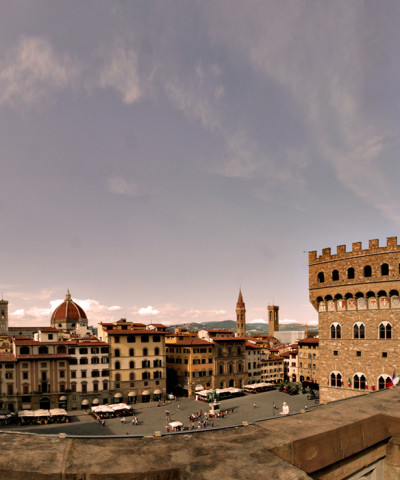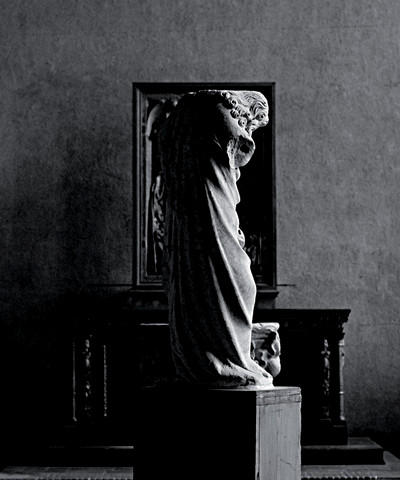The Horne Museum in Florence
Everything you don't know about this exquisite treasure trove of masterpieces of painting and sculpture
An exquisite treasure chest of masterpieces of painting and sculpture (from Giotto to Simone Martini, Masaccio, Filippino Lippi, Domenico Beccafumi and Giambologna) but above all a home, furnished with precious pieces from the thirteenth to the seventeenth centuries. At 6 Via de' Benci stands the Horne Museum, a place where art weave together daily life; it is presented as the English collector designed it: a space in which to relive the past and discover the customs, traditions and art of the city between the fifteenth and sixteenth centuries, in the heart of Florence-a symbolic place of Renaissance culture and art-in the Corsi palace. A setting that the English architect and art historian Herbert Percy Horne wanted appropriate for his own collection of paintings, drawings, furniture, and sculptures, also to recreate the ambience and atmosphere of a Renaissance residence.
Works to see at the Horne Museum
During the few years he lived in the Corsi Palace, Horne put together a sizeable collection of works including paintings, sculptures, drawings and furniture, mostly belonging to the Florentine Renaissance. You are sure to be struck by the painting of “Saint Stephen,” created by the great Giotto between 1330 and 1335, thanks to the gold background, which highlights the richly decorated dalmatic and missal. If you turn your attention to the saint's head, you may notice stones, which allude to the death by stoning that the first Christian martyr had to endure. Equally fascinating is the “Madonna and Child between Saints Jerome and Magdalene,” a painting by Bartolomeo de' Landi, made between 1478 and 1480. The pallor of the Madonna's complexion is illuminated by the darker background and stands out along with her red dress.
Prominent among the sculptures are two works by Giambologna: “Kneeling Venus” and the “Manly Nude.” The goddess, made of terracotta, dates back to 1560 and comes from the private collection of Ferdinando de' Medici. The position of the body, which twists to reach the back with the cloth, allows the sculpture to be observed from every point. Also in terracotta, but this time dating from 1572, the Manly Nude will penetrate you with its serene face and gaze fixed on you. Among the prints and drawings, you will not be able to miss the Head of a Muse, created by the genius of Raphael Sanzio, or the self-portrait of a young Gian Lorenzo Bernini (whose sculptural group of Angels in Glory can also be admired) and, more recently, the Portrait of Mrs. Füssli, drawn by the hands of her husband Johannn Heinrich Füssli.
History
Herbert Percy Horne was born in London in 1864 and died in Florence in 1916. An eclectic figure in Victorian London in the second half of the 19th century, he was an architect, designer, scholar of art, music and literature, as well as a collector. He first came to Italy in 1889, then in 1894 landed in Florence, when he was commissioned by Bell publishers in London to write a book on Sandro Botticelli for the Great Masters series. In 1896 he settled permanently in Florence although he did not abandon his contacts with England. He soon left the design business to devote himself to that of a critic, and his studies of Renaissance art led him to identify with a man of that time, even to the point of ideally reliving his emotions by surrounding himself with works of art.
The palace was built in the mid-14th century, and in 1346 it became the property of the Alberti family. A little more than a century later, the Corsi family bought it and began restoration work in the Renaissance style. It seems that the design was the work of Giuliano da Sangallo, but people such as Adolfo Venturi and Simone del Pollaiolo certainly had their hands on it. In the first half of the 19th century the property passed to Fossi, who wanted to greatly expand the spaces with the construction of the second floor. In 1911 Palazzo Corsi was purchased by Horne, who undertook to restore it to recreate the traditional Renaissance stately home.
Upon his death in 1916, he left his collection (rich with more than six thousand works) to the Italian state, establishing a foundation for the benefit of studies. The official opening of the museum took place in 1921. The president of the foundation and curator of the museum was initially Carlo Gamba Ghiselli, a great friend of Horne, thanks to whom we owe the general arrangement of the collection.
Hours and tickets
Monday through Sunday, 10 a.m. to 2 p.m.
Closed: Wednesdays and holidays.
https://www.museohorne.it/
Full price ticket: 7€
Reduced ticket: 5€, reduced ticket includes students under 26, teachers, adults over 65, organized group, ICOM members, FAI members, Unicoop members, ACI members












